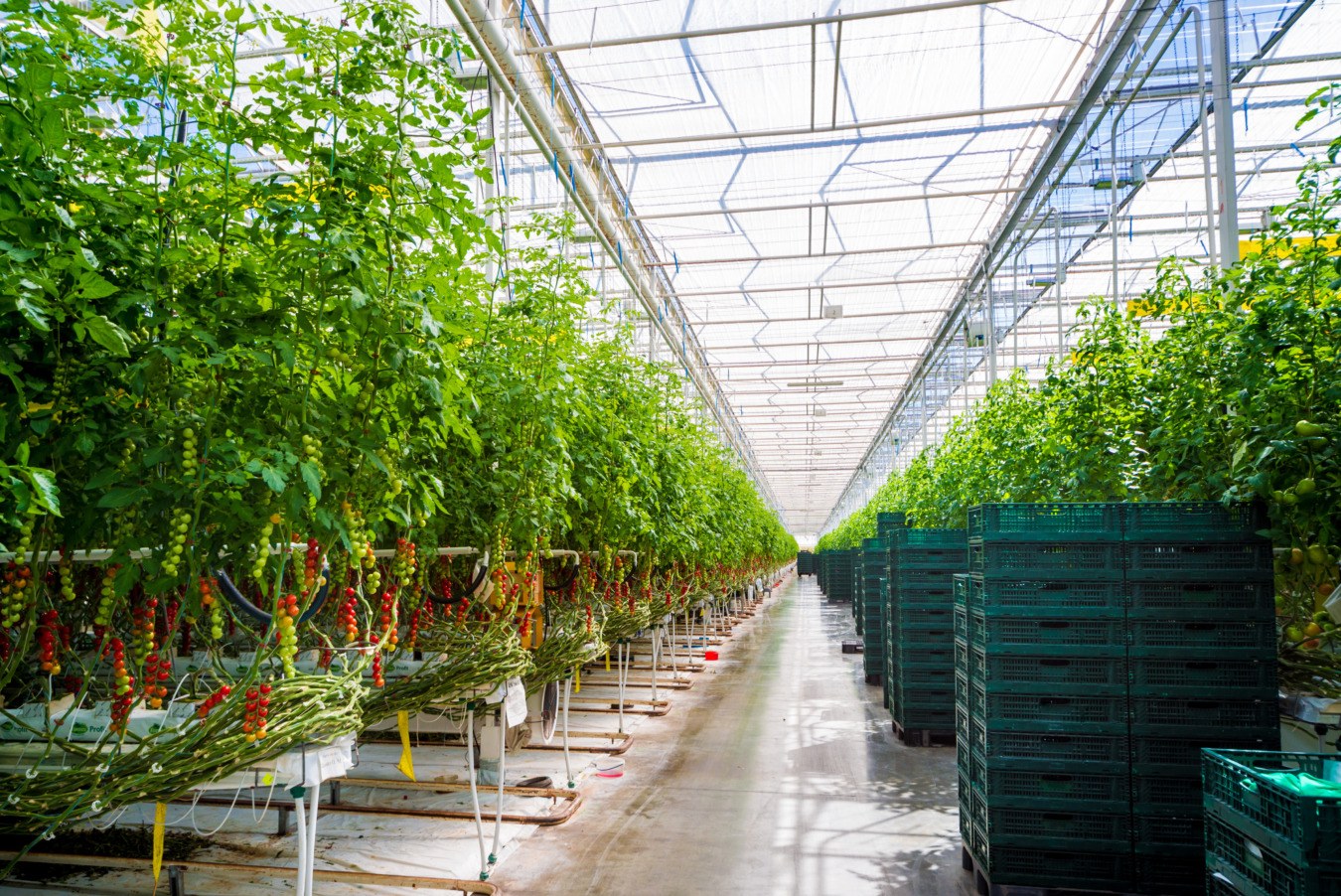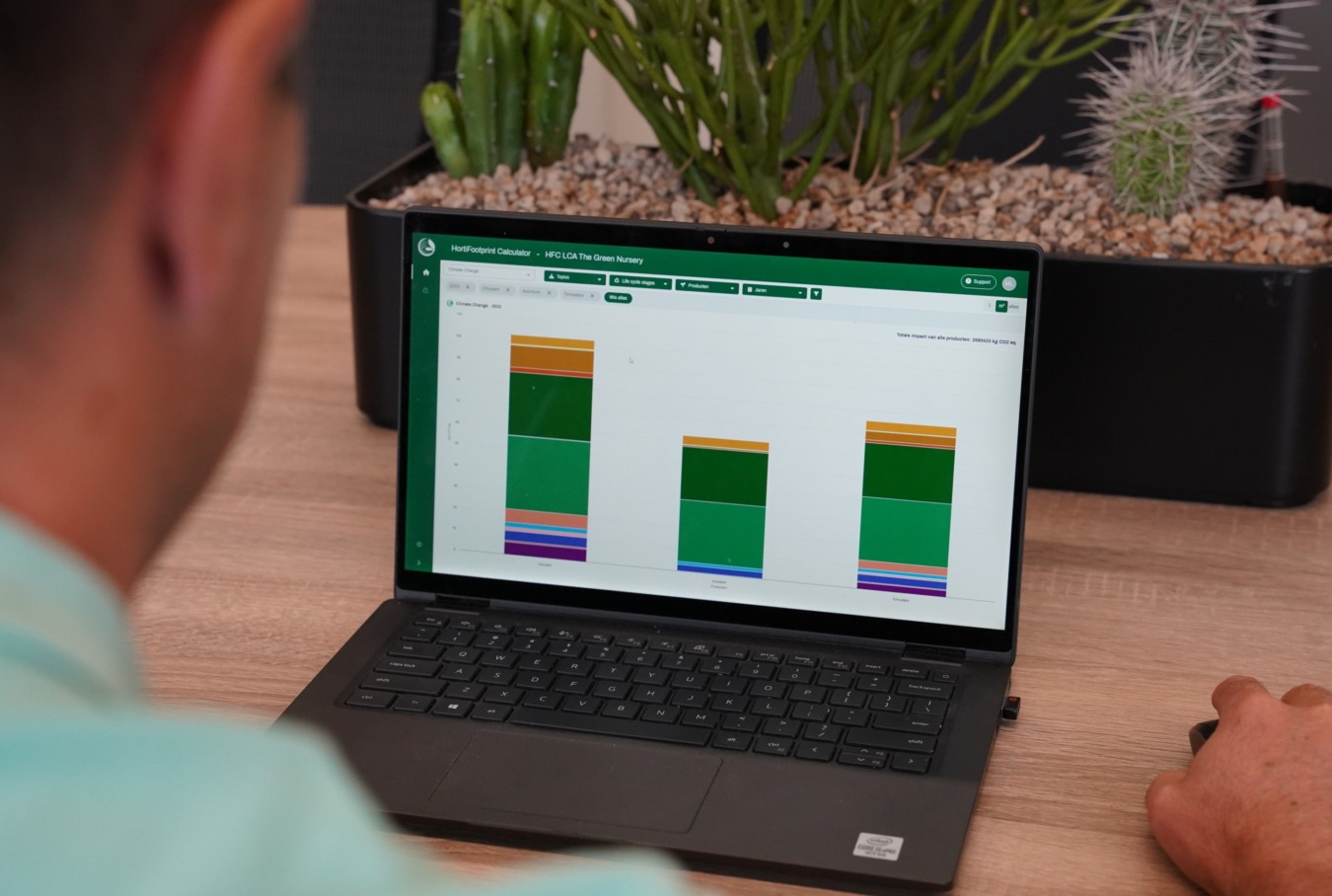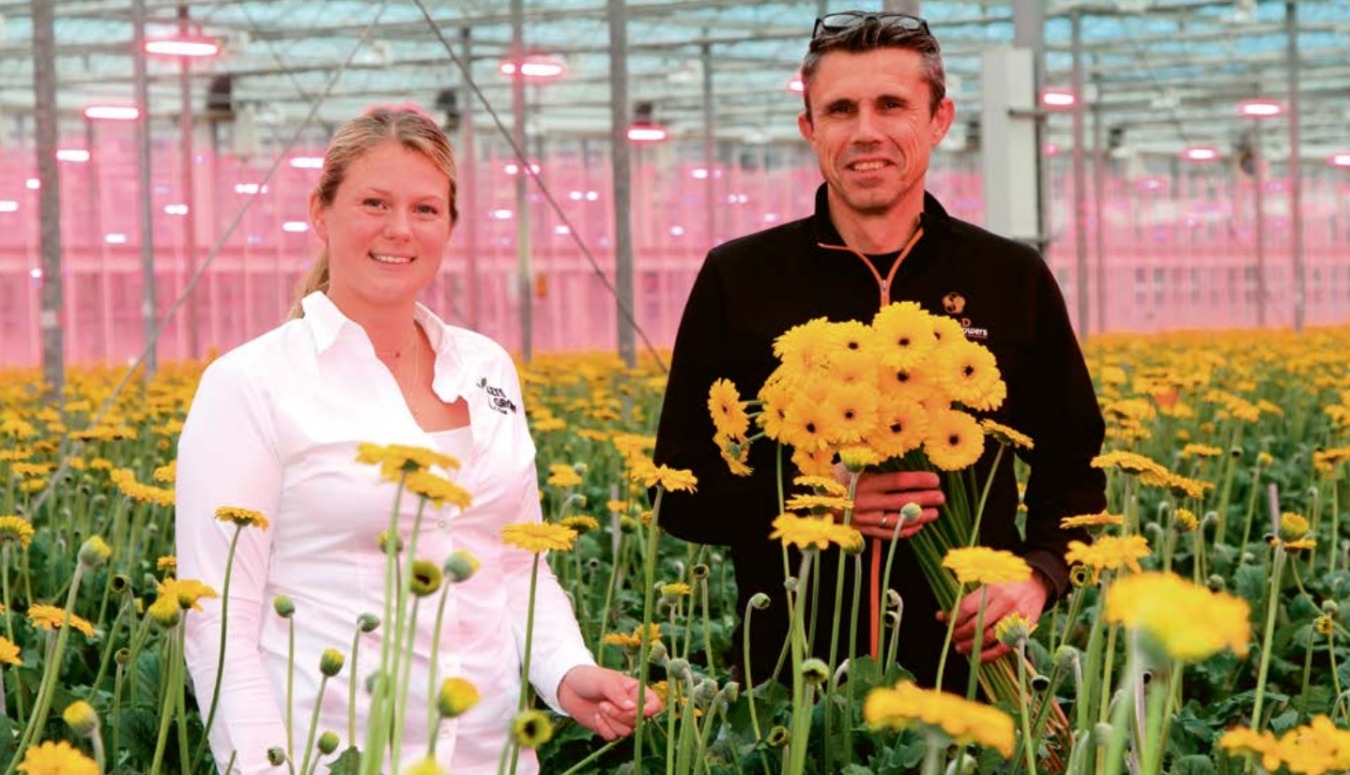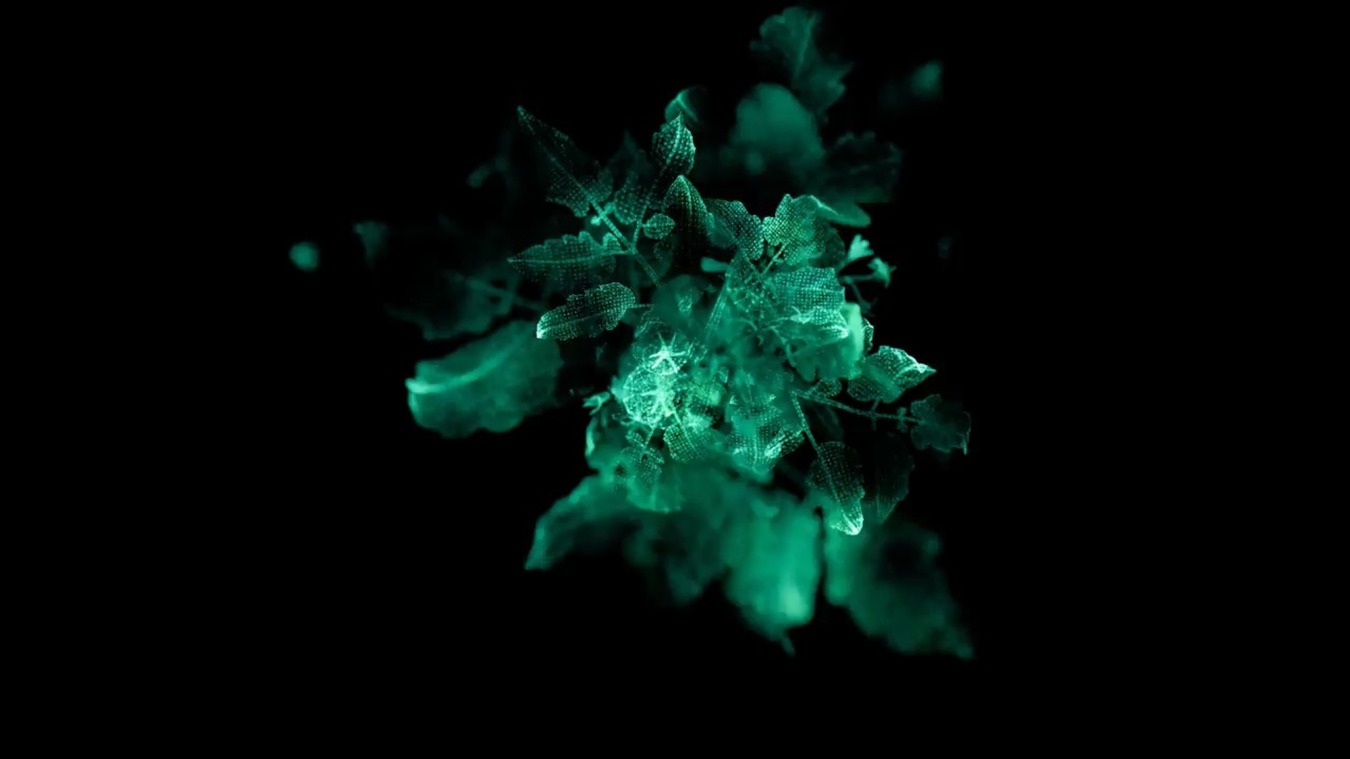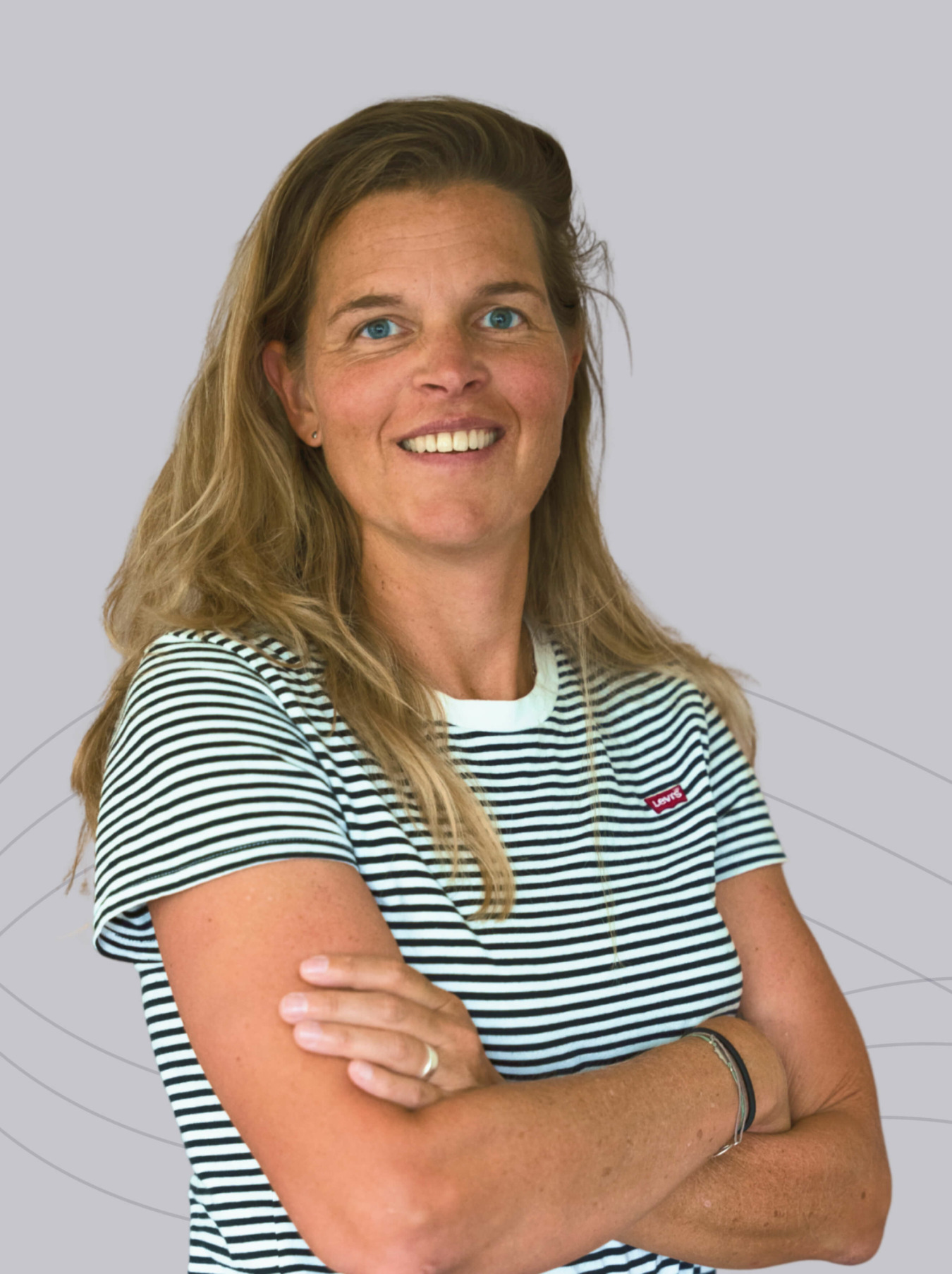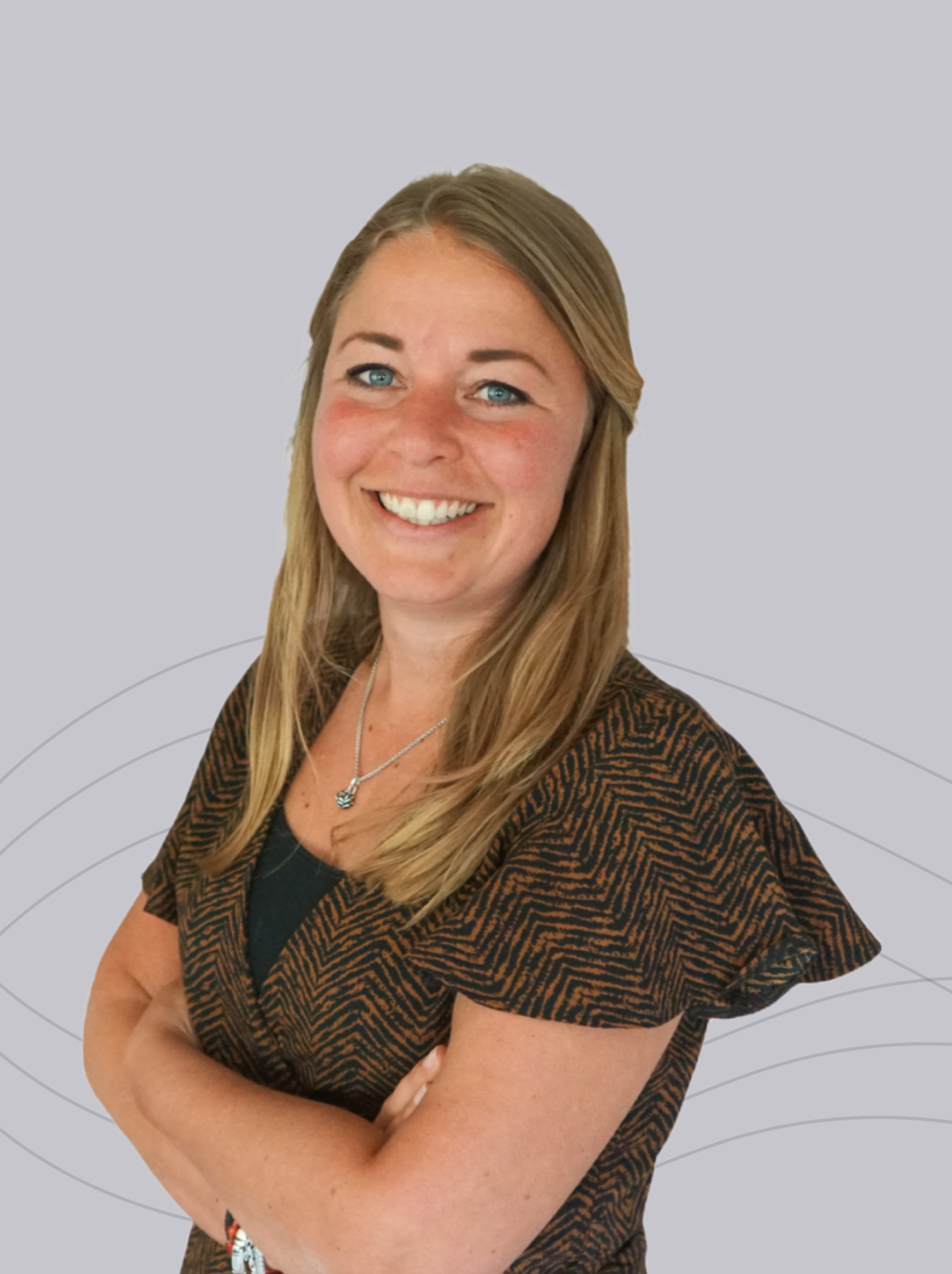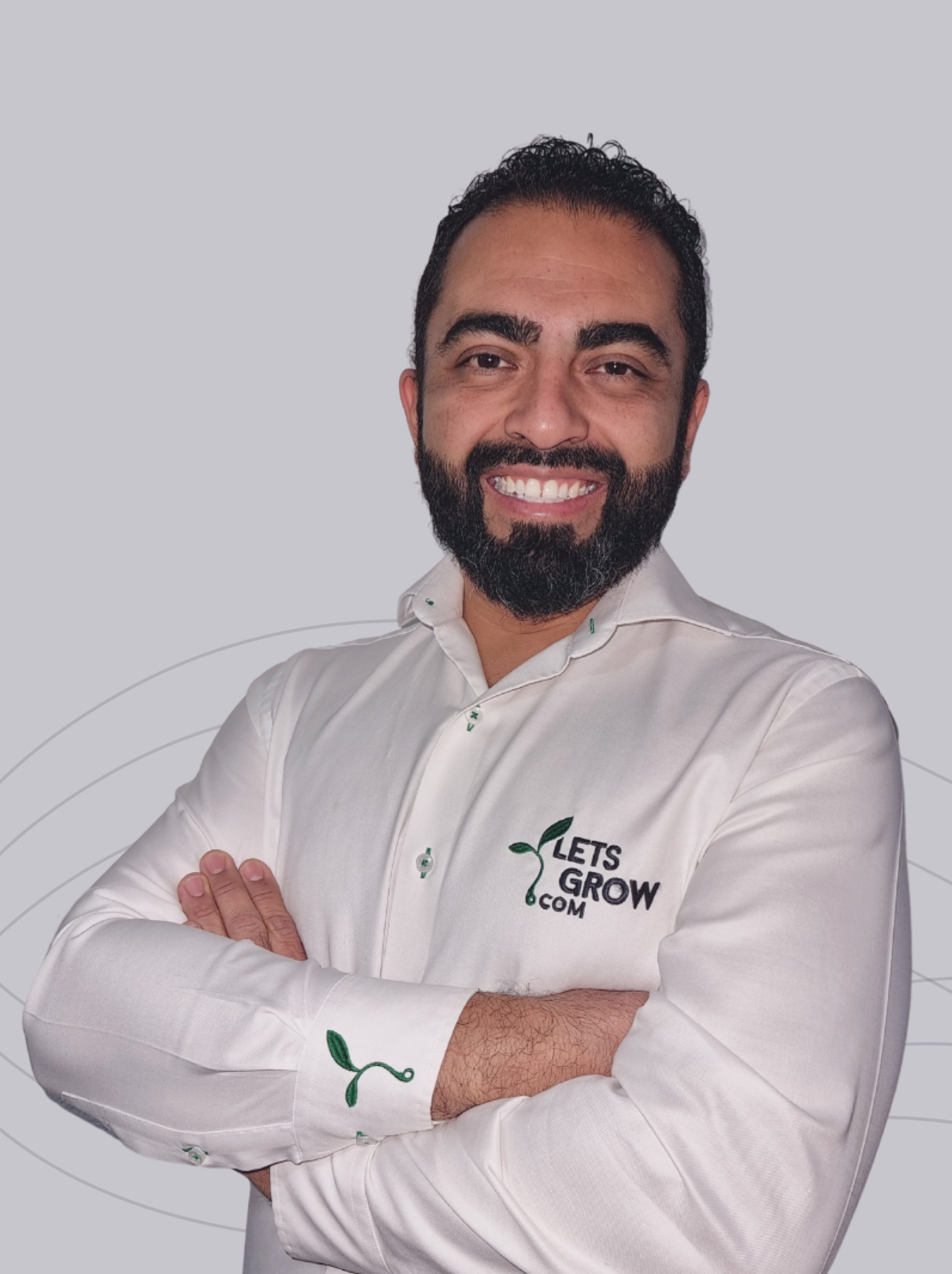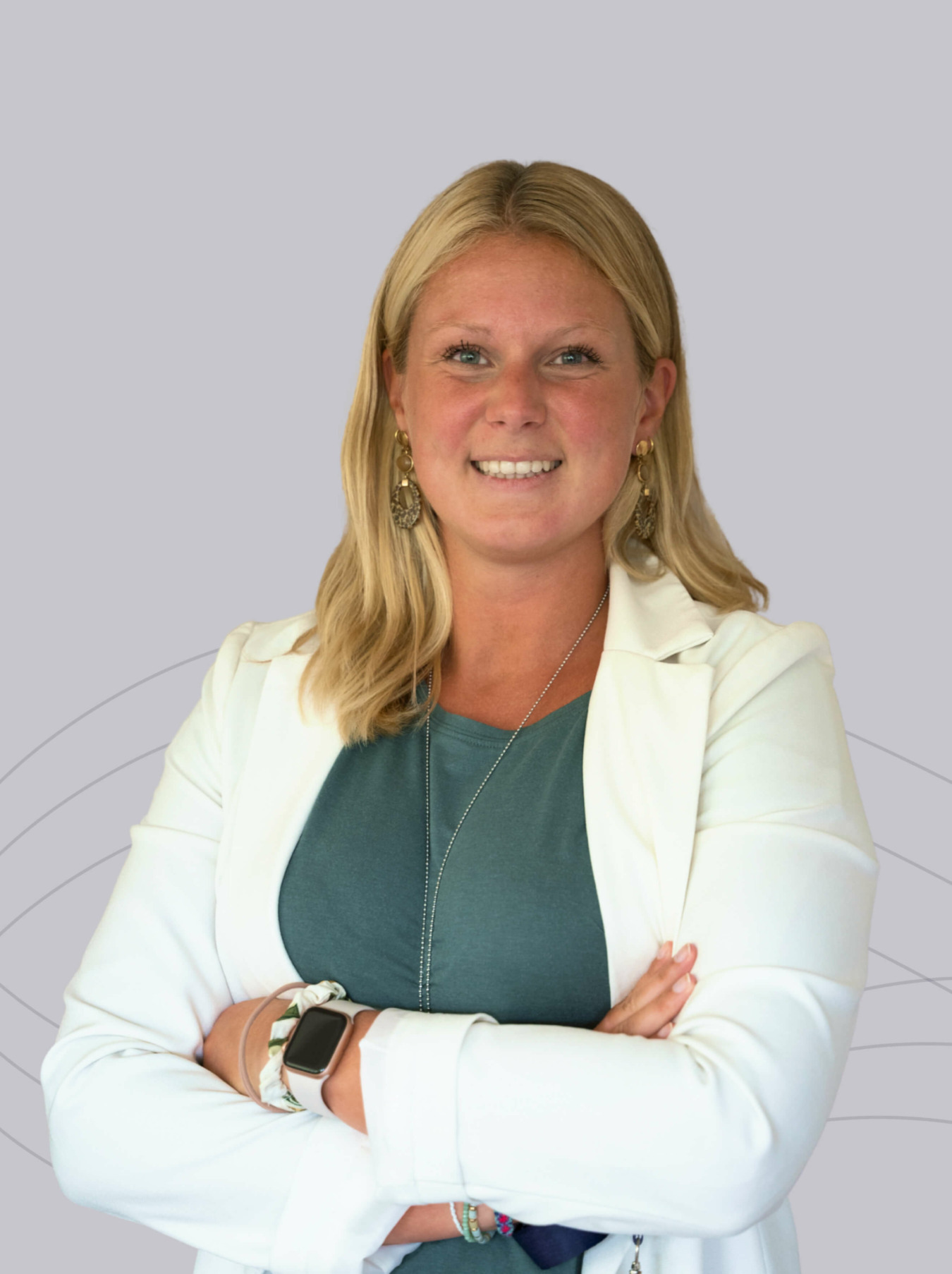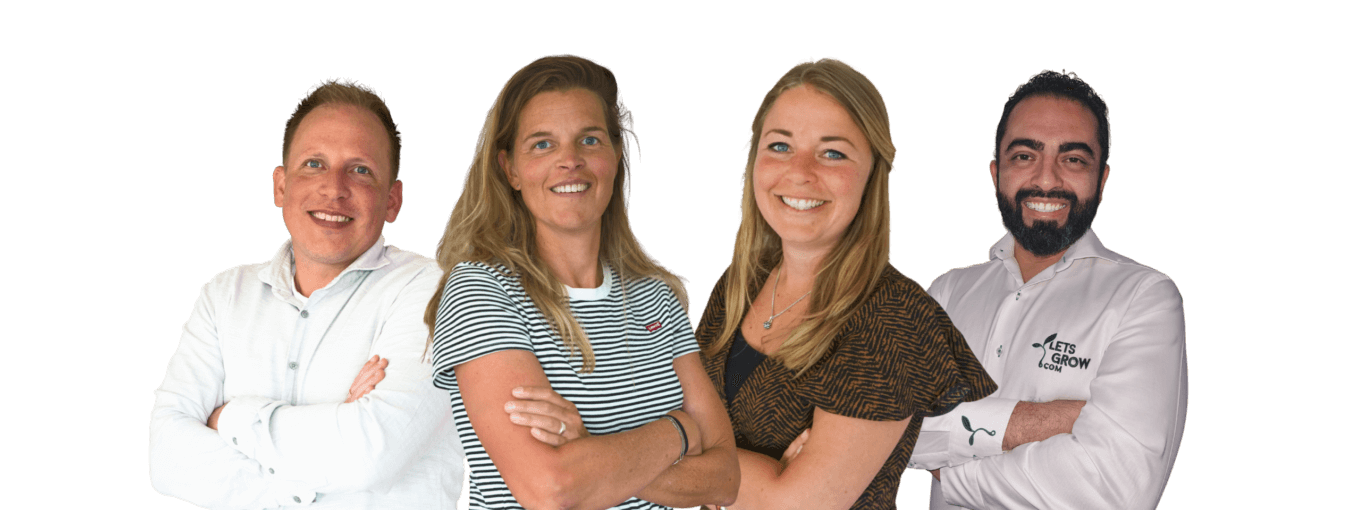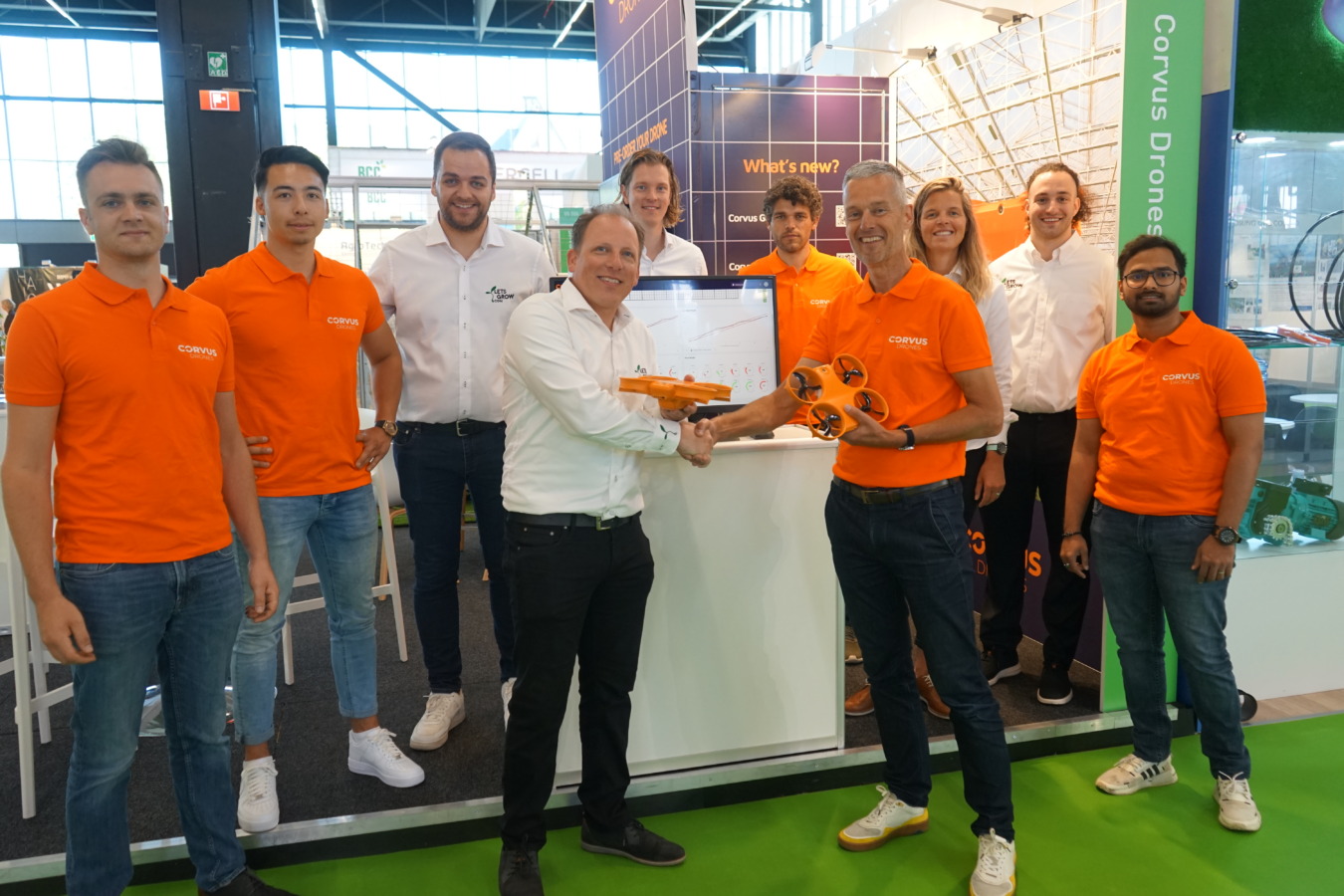
Team AuTomatoes, with some well-known Dutch horticultural faces in it, has won the Autonomous Greenhouse Challenge. The team combined net yield, sustainability, and deployment of AI the best, narrowly trumping team AiCU as well as all other AI teams. And the reference growers, have also been forced to grow cherry tomatoes autonomously since the corona outbreak.
The winning team includes consultants, data scientists, engineers, researchers, and students from TU Delft, Van der Hoeven Horticultural Projects, KeyGene, and Hoogendoorn Growth Management. It was the team that shared updates with some regularity during the Autonomous Greenhouse Challenge, such as about the discussion that took place on the use of lighting.
Autonomous Greenhouse Challenge
Leonard Baart de la Faille announces on behalf of the winning team, "We are making a huge step with this and with the knowledge, we have developed we can perfect crop guidance by using data."
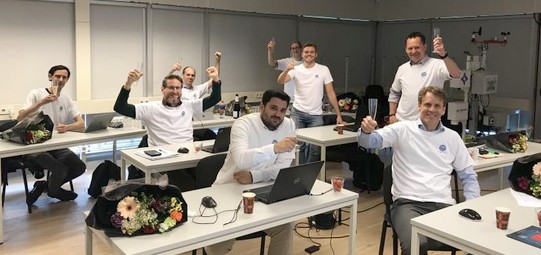
Toasting to the winners. The entire AuTomatoes team consists of Leonard Baart de la Faille, Lars Kerkhof, Tamas Keviczky, Niek Bouman, Neil Yorke-Smith, Gerdine van Donge, Tim Tijsma, René Beerkens, Evripidis Papadopoulos and Godfried Dol.
The conclusion after the second edition, as revealed during the webinar this morning, is that the level of AI teams has gone up considerably so that even with a final sprint and a result above their own forecasts, the reference growers finished at the bottom. Although this does not end the discussion about the importance of green fingers, people in the greenhouse are still needed, as well as many more sensors and data to develop even better algorithms.

50% of the final score was determined by the above graph. The other 20% was determined by sustainability (use of energy and resources) and 30% use of "autonomous cultivation techniques" such as AI.
High yield, low cost
The goal of the Autonomous Greenhouse Challenge was to score as high as possible on kilograms, taste, quality, and sustainability during six months (a longer period than in edition one with a cucumber crop) using the least amount of energy, resources and thus the lowest possible cost. Moreover, the result was also partly determined by the jury that looked at the deployment of "autonomous cultivation techniques." such as AI.

Each team was assigned a piece of the greenhouse at Wageningen University & Research in Bleiswijk to grow a crop there with all possible technical gadgets and the familiar technical aids (sensors, screens, heating, humidification, CO2, irrigation), without entering the greenhouse, i.e. completely 'remotely'.
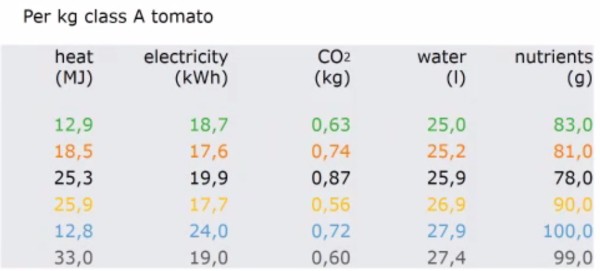
Iedereen écht autonoom
Een uitdaging, voor de vijf AI-teams die helemaal thuis zijn in alle techniek en vooral bergen met data, maar zeker ook voor de referentietelers die nu nog het dichts op de praktijk aansluiten waarin data wel gebruikt wordt, maar een rondje door de kas er zeker ook nog bij hoort. “Als mij vooraf gevraagd was volledig autonoom te telen, dan had ik niet meegedaan”, vertelde referentieteler Kees Stijger (samen met Ted Duijvestijn en Marissa van Duijn een team) vanochtend nog voordat de uitslag bekend werd.
Toch moesten ook Kees en Ted eraan geloven halverwege de teeltwedstrijd. “Na de corona-uitbraak zijn Ted en ik ook niet meer in de kas geweest. Juist op het meest kritische moment, waarin wij hoge etmalen draaiden om de eindsprint in te zetten, hebben ook wij echt autonoom geteeld met filmbeelden, telefonisch overleg en de data waarmee Marissa ons hielp. Een nieuwe uitdaging voor mij, maar het is gelukt boven onze prognose uit te komen, dus ik ben zeker tevreden. Ons plan met een eindsprint is gelukt.”

The gray line here is the reference growers. Team "green" and "orange" ended up standing well above the rest of the teams in the final tally.

Experience
A "little problem" did have to be overcome before the final sprint could begin, for that matter, for all the teams. "The burst main line in the greenhouses in March was a real setback. Then we immediately decided to drip a fungicide along to keep the roots whole, because everything had gotten really wet in all the departments." A piece of "forty years of grower experience.
Not too relaxed
Compared to the first edition, all teams had more preparation time. An advantage said Klaas van Egmond of Delphy and team 'The Automators'. He participated last year and again this year, so he could compare well. "Not only the technical systems but also the whole monitoring of the data we could now prepare better and also do much more automatically. Although it was also risky not to be too relaxed because of the extra time and the extra automated parts."
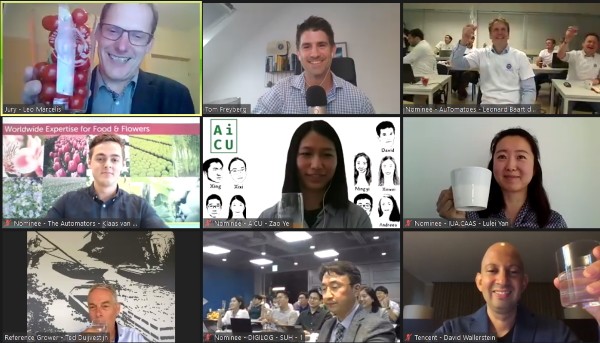
Climate strategies
Several lessons can be learned from the second edition, shared Silke Hemming, organizer of the cultivation competition on behalf of Wageningen University & Research and responsible for brief updates with graphs on social media during the competition. "The different climate strategies of the teams resulted in similar overall productions, but different use of energy and resources such as energy, CO2, water and nutrients."
Even more data, but how to interpret it?
According to Silke, the crop management strategy is the key element for high (and high-quality) production. The same conclusion was also drawn from the first edition, in which lighting was also important. This year the teams already knew how to handle this better saw Silke.
Silke also elaborated on the data. A lot of that is needed to control everything remotely well. "Lack of data is often a problem, it hinders the development of AI algorithms and thus the development of the autonomous greenhouse."
In addition, it remains a matter of interpreting data properly. "What does a signal coming from a sensor mean?" Especially with increasingly newer sensors a challenge, because if something is really new, there is still a lot of knowledge to be gained.
People are still needed
According to Silke, the Autonomous Greenhouse Challenge showed that it is possible to grow vegetables remotely. "In times of COVID-19, this gives a lot of opportunities. All decisions can be made autonomously remotely. However, people are still needed in the greenhouse for crop operations (turning in, harvesting) and for maintenance of sensors/systems if needed."
More developments are needed there to allow robots to work with humans. "That definitely requires more research in the future," Silke said. Leo Marcellis, a member of the jury, also concurred. "We are only at the beginning of what is possible."
Who knows what can be discovered again in edition three (provided enough sponsors come forward), in which after cucumber and tomato it might be bell pepper's turn. Although there is a lot of demand worldwide for innovation in tomatoes as the largest product group, so building further on the knowledge from this tomato crop is perhaps the most obvious thing to do.
Source: GroentenNieuws | Author: Thijmen Tiersma
Stay informed
"*" indicates required fields
